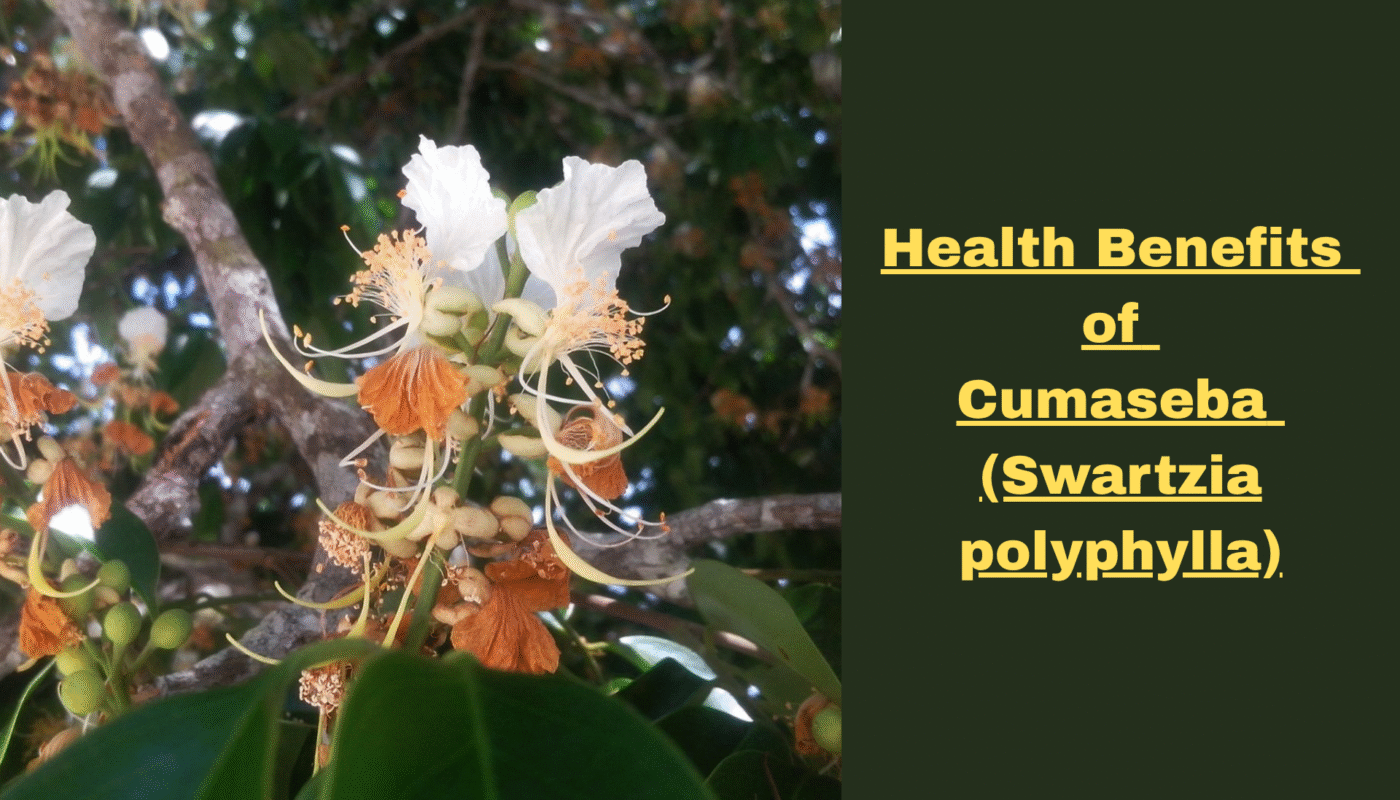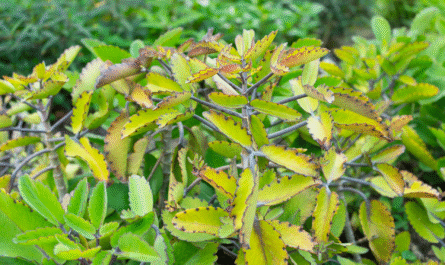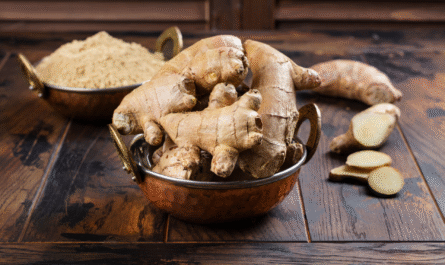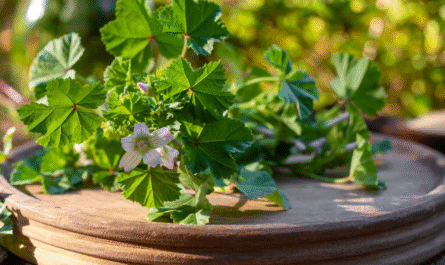The Health Benefits of Cumaseba (Swartzia polyphylla), a lesser-known medicinal tree native to the Amazon rainforest, has long been used by Indigenous South American communities for its wide-ranging healing properties.
Traditionally prepared from the bark and wood, cumaseba is valued for its antimicrobial, anti-inflammatory, and tonic effects, especially in addressing liver, urinary, and respiratory ailments.
As interest in natural and plant-based remedies grows globally, cumaseba is starting to attract attention for its potential role in holistic health strategies.
From supporting liver function to reducing inflammation and aiding the body’s defenses, cumaseba offers a compelling set of benefits rooted in centuries of traditional use.
Health Benefits of Cumaseba
1. Natural Anti-Inflammatory Power
One of the standout benefits of cumaseba is its ability to reduce inflammation naturally. Chronic inflammation contributes to a variety of diseases, including arthritis, cardiovascular issues, and autoimmune conditions. The bark of Swartzia polyphylla contains bioactive compounds that traditional healers have used for generations to relieve swelling and pain.
These anti-inflammatory effects appear to be driven by alkaloids and flavonoids, which help modulate inflammatory responses without the gastrointestinal side effects often associated with synthetic medications. In folk medicine, cumaseba is often used as a decoction or infusion to treat joint pain and muscle soreness.
Moreover, its natural compounds are believed to interfere with the production of inflammatory mediators like prostaglandins and cytokines, helping the body maintain a balanced immune response. While more research is needed to pinpoint the exact pathways, its effects are well-documented in ethnobotanical literature.
If you’re dealing with ongoing inflammation, especially in the joints or muscles, cumaseba might offer a safe, plant-based way to manage discomfort and improve mobility over time.
2. Liver and Detox Support
Cumaseba has long been recognized in Amazonian herbal medicine as a liver tonic. Traditionally, decoctions made from the bark have been used to stimulate liver function, cleanse the blood, and support detoxification processes.
The liver plays a critical role in filtering toxins, regulating hormones, and metabolizing drugs. Over time, environmental pollutants, processed foods, and alcohol can stress the liver. Cumaseba is thought to aid liver health by enhancing bile production and supporting the regeneration of liver cells.
Some herbalists consider cumaseba an excellent addition to detox regimens because of its ability to support hepatic pathways and reduce inflammation in the liver. Anecdotal evidence supports its use in cases of jaundice, sluggish digestion, and general fatigue tied to liver overload.
Though clinical trials are still limited, the traditional use of cumaseba for liver and detox support offers a promising option for those seeking natural methods to maintain internal balance and reduce toxic load.
Also Read: 9 Health Benefits of Beetroots According to Experts
3. Urinary and Reproductive Health
Another traditional use of cumaseba involves the treatment of urinary tract infections (UTIs), bladder irritation, and even certain reproductive system imbalances. Its antiseptic and anti-inflammatory qualities make it an effective remedy for flushing out bacteria and soothing irritated mucosal tissues.
In Amazonian medicine, cumaseba bark is often brewed into a tea and consumed to relieve painful urination, kidney discomfort, and symptoms of cystitis. Women also use it to help regulate menstrual cycles and reduce cramps, though more evidence is needed to understand this effect.
Its diuretic action helps promote urine flow, which can assist the body in clearing infections more efficiently. This makes it a potentially valuable natural ally for those prone to recurring UTIs or kidney issues.
Using cumaseba regularly—under guidance from a knowledgeable herbal practitioner—could support urinary tract health and reduce reliance on antibiotics for minor, recurring infections.
4. Respiratory Relief and Immune Support
Cumaseba has a strong tradition of use in managing respiratory conditions such as bronchitis, asthma, and chest congestion. Its anti-inflammatory and expectorant properties make it helpful in breaking down mucus and calming inflamed airways.
People suffering from chronic cough, sore throat, or even sinus infections have used cumaseba bark decoctions as a soothing herbal remedy. Its antimicrobial action also helps tackle the underlying pathogens that often contribute to respiratory infections.
Additionally, cumaseba supports immune health by reducing the body’s inflammatory burden and enhancing natural defense mechanisms. Flavonoids and alkaloids present in the bark work synergistically to protect against oxidative stress and microbial invasion.
For those looking to strengthen respiratory resilience—especially during cold and flu season—incorporating cumaseba tea or tincture into a seasonal wellness plan may provide added protection.
5. Wound Healing and Skin Protection
The antimicrobial and astringent qualities of cumaseba also make it an excellent natural option for skin care and wound healing. Traditional Amazonian medicine has long used cumaseba bark in poultices and washes to treat cuts, abrasions, and skin infections.
Its tannins help tighten tissue and reduce bleeding, while its antimicrobial properties prevent infection. This makes it useful for first aid applications in natural medicine, especially in environments where modern pharmaceuticals are not readily available.
Some traditional practices also involve using cumaseba infusions to treat fungal skin conditions or soothe insect bites. Its calming effect on the skin, paired with antimicrobial action, provides a dual benefit.
Whether used as part of a topical salve or a herbal soak, cumaseba offers a versatile, plant-based solution for skin protection and faster healing.
Final Thought on Health Benefits of Cumaseba
Cumaseba (Swartzia polyphylla) is a powerful yet underappreciated medicinal tree with wide-ranging health benefits rooted in traditional Amazonian healing. From supporting liver detoxification and soothing urinary infections to fighting inflammation and promoting respiratory health, cumaseba is emerging as a reliable herbal ally for those seeking natural wellness solutions.
Though modern scientific research is still catching up, centuries of traditional use suggest a safe and effective profile, especially when used under professional guidance. Whether taken as a tea, tincture, or topical application, cumaseba has the potential to be a cornerstone of holistic health.
FAQs About Health Benefits of Cumaseba
What is cumaseba used for in traditional medicine?
Cumaseba is traditionally used to treat liver problems, urinary infections, inflammation, respiratory conditions, and skin wounds.
Can cumaseba help with skin problems?
Yes, cumaseba’s antimicrobial and astringent properties make it effective for treating minor wounds, rashes, and skin infections.
Is cumaseba safe for daily use?
While generally considered safe in moderate doses, daily use should be guided by a healthcare practitioner to avoid any potential interactions.
How is cumaseba typically consumed?
Cumaseba is usually prepared as a tea, tincture, or decoction. It can also be applied topically in washes or poultices.
Is cumaseba scientifically proven to work?
While traditional use is well-documented, modern clinical research is still limited. Early studies support many of its claimed health benefits.























